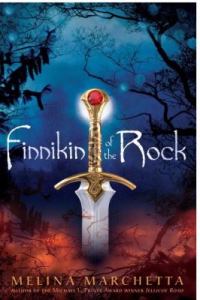Book Cover Image:
Image Credit: Campbell County Public Library. (2015) http://www.ccpls.org.
Book Summary:
Arnold Spirit, or Junior, as he is known in Wellpinit, a town on the Spokane Indian reservation, has many strikes against him. He was born with hydrocephalus and underwent surgery at six months of age. His brain disorder left him with physical disabilities and deformities. His family lives in extreme poverty – not even able to afford vet care for a dying pet – and his father is an alcoholic. But somehow, Junior keeps fighting. He is smart; a talented cartoonist; and a decent basketball player. One day, he realizes he is using the same geometry textbook his mother once used, thirty years ago, because his school has no money to afford new ones. He gets so angry that he throws the book at his math teacher, an eccentric old man Junior calls “Mr. P.” After that, Mr. P. has a serious discussion with Junior, about life on the reservation, about white people, and about Indians. Mr. P. suggests the unthinkable — that Junior should leave the reservation and not come back. For Junior, and for his culture, leaving the reservation is betrayal. But Junior does leave; that very night, he tells his parents that he wants to attend a new school, in an off-reservation town called Rearden. Once his parents agree, and Junior leaves Wellpinit, he finds himself stuck between two worlds: he does not fit in at the white school, but he can never return to the reservation school. Junior — now using his given name, Arnold — stays at the white school for the remainder of his freshman year. He joins the basketball team; endures shunning from his entire town; and gradually makes friends at his school. He also suffers from three deaths — that of his grandmother, his father’s best friend, and finally, his sister. Arnold notes that the real difference between white and Indian youth is in the number of funerals they’ve attended; because of the prevalence of alcohol-related deaths on the reservation, Indian youth cannot even count their deaths on the fingers of both hands. At the end of the school year, Arnold and his former best friend, Rowdy, plan some one-on-one basketball. Rowdy compares Arnold to nomadic Indians, noting that he is always seeking better ground. Arnold tries to convince Rowdy to transfer schools as well, to get off the reservation, to be more nomadic, but he knows the effort is futile. In the end, there is only basketball, and a summer evening, and a resurrected friendship to think about.
APA Reference of Book:
Impressions:
The portrait Alexie paints of life on the reservation is both touching and horrifying: the family connections and love that emanate from the page are touching, while the details of poverty, alcoholism, and fuitility are horrifying. Alexie’s own life experiences inform his novel about a young teen struggling to find a way off the reservation that, according to his teacher, will kill him. Some readers may have trouble believing Alexie’s descriptions, considering them exaggerations; however, I have some experience of living near a reservation, and find Alexie’s story believable. Junior, or Arnold, is at once humorous, and awkward, and confused, and lonely — just like any teenager. Because of some sexual allusions, I recommend this story for youth enrolled in 8th grade or older. My only criticism of Alexie’s work is the tone of judgement with which he writes about life on the reservation.
Professional Review:
“Growing up on a Spokane Indian reservation, Junior is as unlikely a hero as you’ll ever meet. Born with a variety of medical problems and beset by family tragedies, he becomes a nerdy would-be cartoonist, his self-defense mechanism a wickedly sardonic sense of humor. As he explains it, ‘My parents came from poor people who came from poor people who came from poor people, all the way back to the very first poor people.’ But Junior, determined to break the cycle, enrolls in an all-white school off the reservation. His experiences leave us gasping in pain, laughing out loud, and feeling our hearts break. Told in a wise/wisecracking first-person voice, Alexie’s novel presents an unforgettable character, ready to take on the world. We as readers are pulling for him to succeed. “
Library Uses:
This novel can be used for multiple display purposes: include it in a display of challenged books for Banned Books Week; use it in a display of literature by Native American authors for Native American Heritage Month; or display it among a collection of illustrated novels during Teen Read Week.







